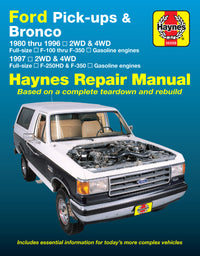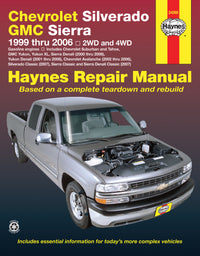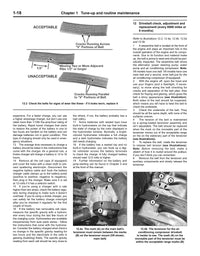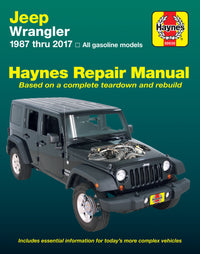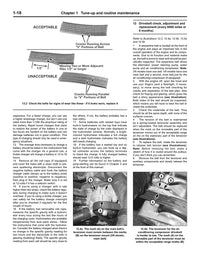Recent observations of the Do-it-Yourself (DIY) Automotive Market
Major events and general underlying trends continue to spark growth
Since 2020, the DIY "do-it-yourself" automotive repair and maintenance market has shown strong growth (5.96% CAGR) outgrowing the "do-it-for-me" or "use a professional" (DIFM) segment (4.29% CAGR) according to the Auto Care Association. In value terms, DIYers make up roughly one-fifth or 20% of all automotive parts sales in the U.S - a significant group of people seeking to be empowered and free to maintain and repair their own vehicle.
Notably, the COVID-19 pandemic sparked a rise in DIY activity for Haynes Publishing. With many people at home in 2020–2021 (and some wary of visiting repair shops), more car owners tried handling maintenance themselves. While DIY activity normalized after the pandemic, many of those new DIYers have continued with DIY practices going forward reflecting the robust demand from people repairing and upgrading their own vehicles.
According to the Wall Street Journal, with vehicle repair costs increasing by 28% over the past three years, many car owners are turning to DIY solutions to mitigate expenses. For instance, replacing a side-view mirror at a dealership might cost $1,000, whereas sourcing the part online and installing it personally can reduce the expense to around $50
However, market growth is also underpinned by the aging vehicle fleet in the USA. The average age of cars and light trucks on U.S. roads hit a record high of 12.5 years in 2023, up several months from the prior years. In fact, there are now about 120-125 million vehicles in operation that are over 12 years old. Older cars generally require more maintenance and repairs, which often fall to owners once warranties expire. This aging fleet has expanded the need for aftermarket repairs, enlarging the DIY customer base.
US Trade
With more recent changes in the structure of US trade with the rest of the world, the DIY market is likely to reshape further as drivers seek new ways to retain their freedoms to maintain their vehicle and keep their wallets in tact. Some estimates from Fortune Business Insights include:
Electric Vehicles
- Lithium-ion battery imports (primarily from China and South Korea) now face a 25% cost increase.
- EV-specific components (e.g., inverters, controllers) are also affected, potentially increasing repair costs by 15–20%.
- Battery replacement costs could rise from an average of $6,000 to $7,500+
Professional repair services
- Common parts like brake pads, filters, and hoses—mostly imported—are now likely to be 10–18% more expensive.
- Labor costs remain stable, but total repair bills could be expected to rise 8–12%.
- Shops may need to increase service prices or absorb costs, squeezing margins which can encourage some to turn to DIY or delay repairs
Diagnostics and Tools
- Electronic diagnostic tools (often imported from Asia or Europe) now cost 10–25% more.
- A scan tool that previously cost $2,000 may now retail for $2,400–$2,500
DIY Retail
- Some online retailers appear to be passing on 10–15% price hikes on imported parts.
- DIY consumers are shifting toward remanufactured or domestic alternatives.
- Private-label parts are gaining traction as a cost-saving substitute
Manufacturing and Supply Chain
- Domestic manufacturers may face 15–20% higher raw material costs (steel, aluminum).
- This could drive up the cost of U.S.-made parts by 8–12%.
- Some firms may look to invest in automation to offset labor and material inflation
Evolving Consumer Behavior in DIY Car Care
Are you or do you know a DIYer?
DIY consumer demographics and habits in DIY vehicle repair have been evolving. Traditionally, DIY car maintenance was associated with hobbyists and older generations, but today younger drivers are becoming heavily involved. A recent 2024 Haynes survey shows that 45-50% of DIY automotive consumers are between 18–44 years old, compared to only 35%-40% of that age group among those who exclusively use professional service. Recent data from the Auto Care Association seems to agree, with automotive DIY consumers skewing younger than those seeking professional help (do-it-for-me). Exactly half of all DIYers are 18-44 years old, compared to 38% of DIFM consumers. 62% of DIFM consumers are 45 and older, vs. 50% for DIYers.
DIYers also span a range of income levels according to Haynes Manuals research – they are actually more likely than average to have mid-level incomes, engineering backgrounds, employed full-time or are self-employed, finding time for vehicle projects as a money-saving and self-reliance pursuit.
DIY enthusiasts are also more likely to own multiple vehicles, with a notable preference for American-made brands like Ford and Chevrolet according to a 2024 survey by the Auto Care Association and Hanover Research.
Save almost $4,000 on average per year with our manuals
Our customer insights confirm that saving money is the number one motivation for DIY repair and maintenance - but this hides many other important lifestyle motivations. According to the Auto Care Association research, the top three reasons drivers do their own maintenance are “saving money,” “having self-reliance/independence,” and the “convenience and flexibility” of DIY work. In an era of rising repair shop fees, avoiding labor costs can indeed yield substantial savings. Owners of our manuals tell us they save on average $3,993 annually because of the DIY knowledge they now have readily available in their hands.
Many DIY enthusiasts also take pride in learning new skills and having control over their vehicle’s care. This desire for independence grew during pandemic lockdowns and has persisted for many. For example, even as shops reopened, a solid share of Americans continued handling oil changes, brake jobs, and other tasks at home because they had built the confidence to do so.
DIYers have healthier vehicles!
DIYers’ maintenance habits also differ from those who rely on professionals. DIY car owners tend to be proactive with maintenance – they perform routine service more frequently and address issues sooner - certainly Haynes consumer insights suggests DIYers are more likely than average to perform regular maintenance. They are also far less likely to let service intervals slip, especially significant mileage or age-related milestones. Essentially, those who maintain their own cars often check things regularly and fix problems as they arise, which can keep vehicles in better shape. This may be because the out-of-pocket cost for a DIY oil change or tune-up is lower (only parts and one’s time), and because many DIYers use their vehicles for specific usage occasions and want to avoid trusting their vehicle to those without the same intimate knowledge. In fact, DIY consumers often own older or multiple vehicles as part of their hobby – the average primary vehicle of a DIYer is 6+ years old, and DIYers are more likely to own project cars, motorcycles, ATVs, etc. on the side. DIY car care has become a mainstream practice among a broad range of drivers, not just a niche of gearheads or enthusiasts. Further, the demographic mix is trending younger and tech-savvy, with habits shaped by a desire for cost savings, convenience, and hands-on engagement with their vehicles.
Haynes Publishing is a proud member of the Autocare association
Useful References
Would You Fix Your Own Car? These Amateurs Are Trying It. - WSJ

